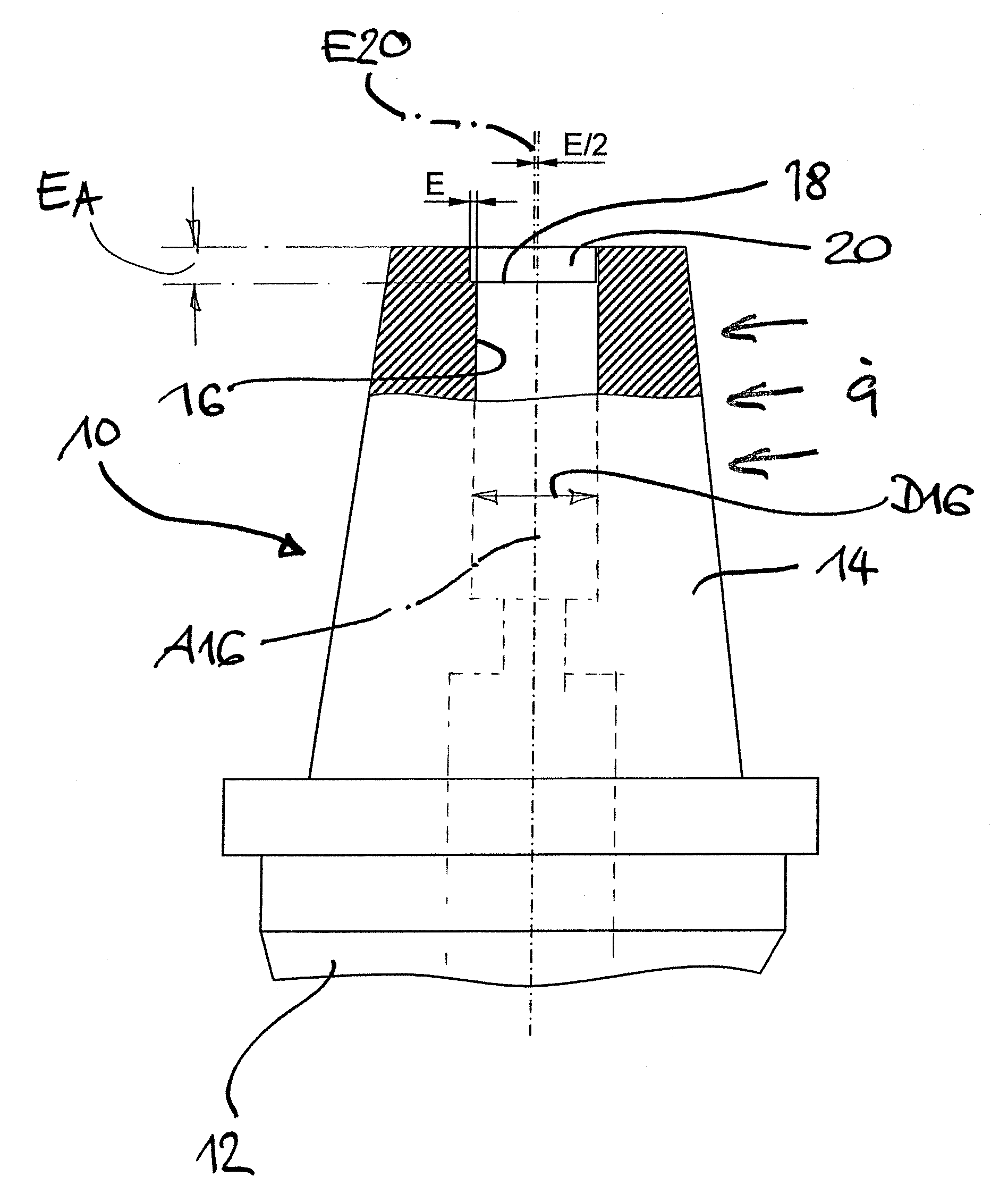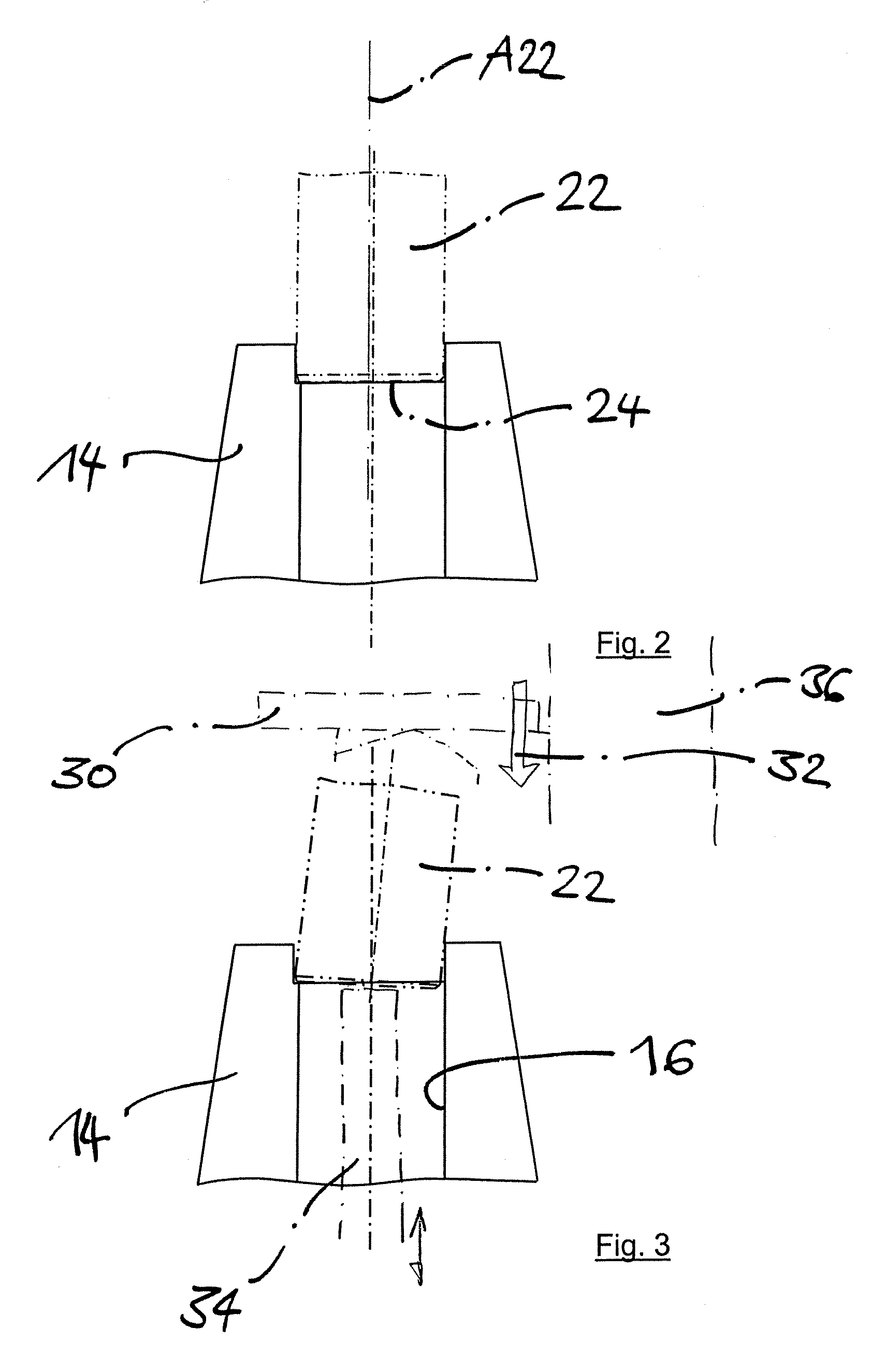Shrink-fit chuck with eccentric positioning
a chuck and eccentric positioning technology, applied in the field of chucking devices, can solve the problems of significant weight of these tools, slight tilting, and simplified use of tools, and achieve the effect of simple automatic use of tools
- Summary
- Abstract
- Description
- Claims
- Application Information
AI Technical Summary
Benefits of technology
Problems solved by technology
Method used
Image
Examples
Embodiment Construction
[0023]In FIG. 1, a shrink-fit chuck tool holder oriented vertically in a shrink fixture, which is not shown in detail, has been assigned reference numeral 10, which tool holder is intended for cylindrical tools, particularly circular cylindrical shank tools. The tool holder comprises a fastening shank 12, for example in the form of a hollow taper shank, which is not shown in detail and which is used to establish the connection to a machine tool. Reference numeral 14 designates a thermally expandable shrink section, comprising an inside recess 16 for the centered accommodation of a tool shank, which is not shown in detail, which recess is manufactured, preferably ground, to fit the outside diameter of the tool to be inserted. The inside recess 16 is formed by the circular cylindrical surface. The axis of the inside recess 16 has been assigned numeral A16.
[0024]The inside recess 16 has a diameter D16, which is adapted to the outside diameter of the tool such that shrink fit is guarant...
PUM
| Property | Measurement | Unit |
|---|---|---|
| Diameter | aaaaa | aaaaa |
| Displacement | aaaaa | aaaaa |
Abstract
Description
Claims
Application Information
 Login to View More
Login to View More - R&D
- Intellectual Property
- Life Sciences
- Materials
- Tech Scout
- Unparalleled Data Quality
- Higher Quality Content
- 60% Fewer Hallucinations
Browse by: Latest US Patents, China's latest patents, Technical Efficacy Thesaurus, Application Domain, Technology Topic, Popular Technical Reports.
© 2025 PatSnap. All rights reserved.Legal|Privacy policy|Modern Slavery Act Transparency Statement|Sitemap|About US| Contact US: help@patsnap.com



